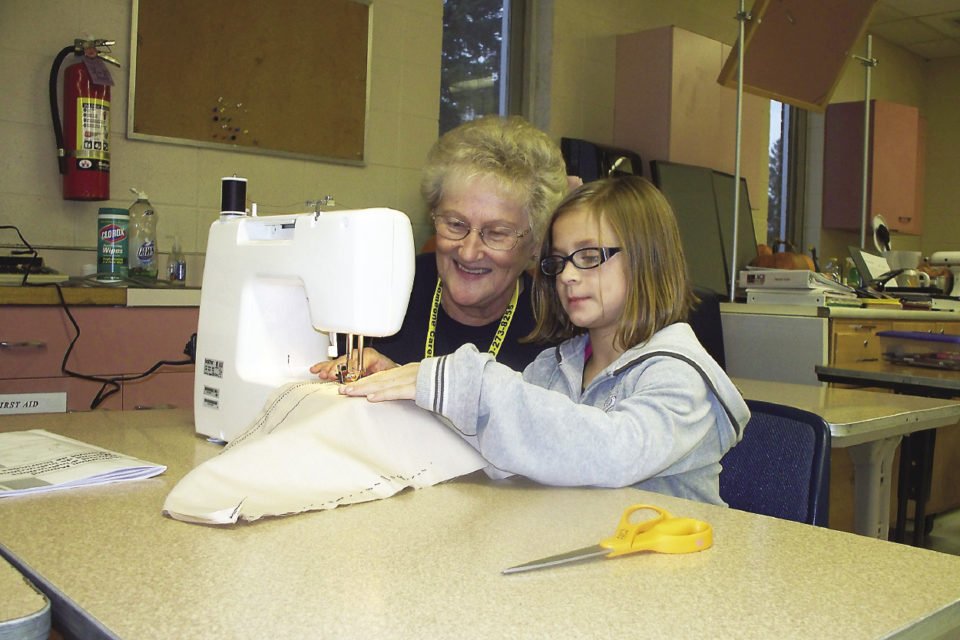An inclusive sense of community should be the goal of every small town. Luckily for 18 rural communities and three tribal nations in northeastern Minn., a program called “AGE to age” exists just for this purpose. AGE to age began 10 years ago by the Northland Foundation as a way to, “bring generations together, connecting young people to older adults to build friendships and community”.
Lynn Haglin is the vice president of the Northland Foundation and the KIDS Plus director for programs like AGE to age. She says that the program started because they had an opportunity to interview older adults, one-on-one, to focus on what they would like to see happen in relation to their lives. They found common themes among the people they interviewed: the desire for more opportunities to volunteer within their communities and the desire to connect with local youth.
“People think about the legacy in their community, and so it was important to them that these young people have this great childhood and feel like people really do care about them and that, hopefully if their jobs allow, they could return,” Haglin said.
Today, there are AGE to age programs all along the North Shore, including: Two Harbors, Beaver Bay, Silver Bay, Finland, Isabella, and the Grand Portage Band of Chippewa. Colleen Wallin is the local coordinator for the North Shore area which includes Beaver Bay, Silver Bay, Finland and Isabella. Wallin has a background working in recreation for the elderly and was a natural fit for the job. The AGE to age programs in the North Shore area are in their second year and, with a core group of about 20 team lead volunteers, they have quite a variety of programs. There have been variety shows, photo journaling weekends, “food, farming & feasting” programs, and farmer’s markets, among other things. They’ve also held intergenerational movie nights where the group picks the movie and then has a discussion about it afterward. The programs have been doing so well, in fact, that they have been the catalyst for 13,100 hours of annual volunteer service throughout all participating communities. This volunteer service includes youth and adults within the AGE to age programs and is valued at $361,300 annually.
For Wallin, she just loves to see the generations together.
“Just that connection is, I think, very important these days. Because kids tend to not be very social but, once we get the ball rolling, it’s wonderful. It’s very social. And it’s really a fun thing to sit back and watch,” Wallin said.
Wallin added that AGE to age is getting to be fairly well-known throughout the local communities.
“People always know we’re all about having a little food snack or that we have prizes. And that it’s a really nice gathering of multi-generational people,” said Wallin.
The Northland Foundation has been tracking the impact of the AGE to age program since it began in 2008. According to their data, “97 percent of youth report increased leadership skills and opportunities to volunteer, and 95 percent of older adults report a renewed sense of purpose and community connections.” That’s not all. Across the communities involved, 9,475 people are engaged in the programs each year ranging from age five to 55-plus.
Throughout all the communities involved, there are nearly 1,000 different inter-generational projects. Each community has unique programs that focus on what is deemed to be important in that area. For example, in Ely, many programs have an environmental component. Among the tribal communities involved, popular programs revolve around culture, language, and teaching traditions like maple syrup making and wild ricing to the younger generations. Since each area has a separate community coordinator, the word gets out about the programs however is normal among locals. Some communities have Facebook pages to share upcoming programs. Other communities use bulletin boards and community centers to get the word out.
However the word gets out, all are welcome. Internships are also offered to college students along with a stipend to help out in their AGE to age community.
“Every age group is welcome, we are not exclusive. They love everybody who comes, each generation. But, we focus on youth and older adults since they are often overlooked,” Haglin said.
She added that AGE to age is about possibility thinking and that, often, we don’t give enough thought to the idea of bringing young people together with the older adults, who they’re not related to.
“They really have so much to offer to one another.”




